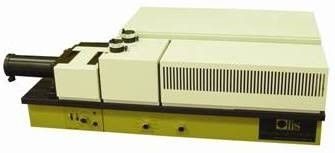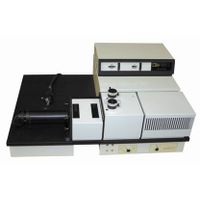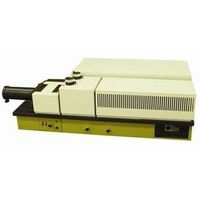Olis - Aminco™ DW-2 & DW-2000
This original spectrophotometer for working on P450, mitochondria, plant and tissue suspensions, and other scattering...
Active Questions & AnswersAsk a Question
There are no current Discussions
UV/VIS Spectrophotometers Service ProvidersView All (32)
Documents & ManualsView All Documents
Features of Aminco™ DW-2 & DW-2000
The technique of dual wavelength spectrophotometry was first developed in 1951 by Dr. Britton Chance who is famous for the pioneering study of ATP synthesis in mitochondria. The Aminco DW-2 and DW-2000 instruments are direct descendents of the original Aminco-Chance dual wavelength spectrophotometer. Investigators working on cytochrome, mitochondria, plant and tissue suspensions, and other particulate samples have trusted the Aminco DW-2 and DW-2000 to produce accurate absorbance readings on their samples for decades.
Turbid samples have large backgrounds which make obtaining accurate absorbance readings very difficult. The more turbid the sample, the more incorrect the answer obtained by an ordinary spectrophotometer will be. And, one cannot know that the results are incorrect with the ordinary spectrophotometer without further quantitative measurements.
With a scattering sample, the measuring light is deflected (scattered) away from the detector, so close positioning of a detector to the sample is critical. Most absorbance spectrophotometers use small face detectors positioned many centimeters from the sample. The DW-2/2000 uses a large face detector a few millimeters from the sample.
However, the "DW-2" gets its name from its more obvious difference from normal spectrophotometers: its use of two monochromators to produce a reference wavelength which is subtracted from the (artificially high) absorbance returned by the sample.
The monochromator is motorized, so that it can scan wavelengths. This "Mono 1" is used to scan the spectrum of interest, i.e. 520 580 nm. "Mono 2" is set to the reference wavelength. When the difference between the returned values is taken, one has a "difference spectrum" which is as close to "correct" as one can obtain from a scattering sample. (One is still contending with two effects: the reference beam is not at the same wavelength as the measuring beam, and, without extraordinary measures, one cannot collect all the scattered light and, therefore, cannot get a perfect answer.)
General Specifications
| Depth | 44 in |
| Height | 21.5 in |
| Width | 22 in |
| Power Requirements | 120V, 50/60 Hz; 240V, 50/60 Hz; 1000 watts |
| Photometric Range | Absorbance Range: -3.0 to 3.0 AU;Maximum Sensitivity: 0.001 Au full scale; Baseline Offset: -3.0 to 3.0 AU; Transmittance Range: 0 to 100%;Maximum Sensitivity: 0 to 0.1% full scale; Baseline Offset: 0 to 100% |
| Weight | 300 lbs |
| Wavelength Range | 190 to 900 nm |
| Scanning Speed | 0.1 nm/sec to 20 nm/sec |
| Light Source | Deuterium and Tungsten lamps |
| Stray Light | at 200 nm: < 0.02%; at 300 nm: < 0.03%; at 700 nm: < 0.01% |
| Wavelength Resolution | 0.3 nm |




